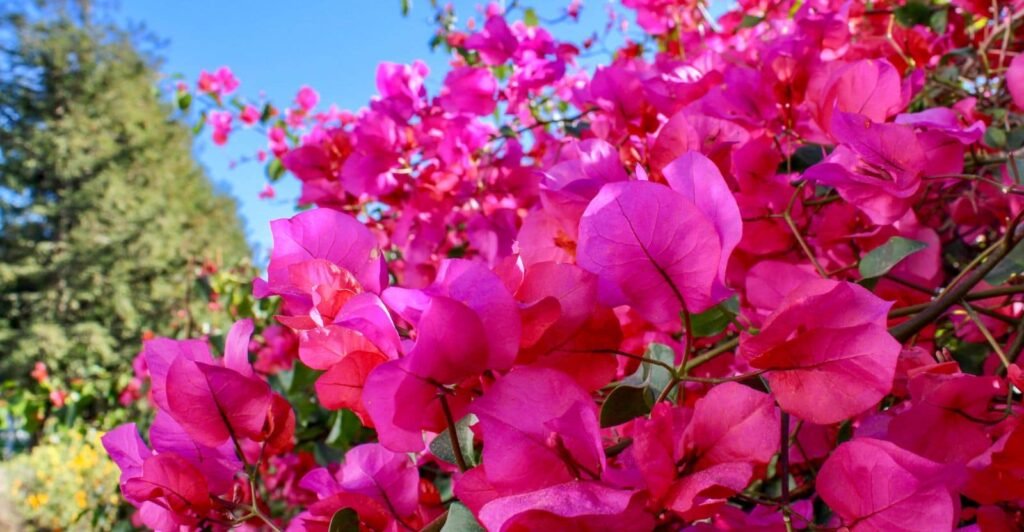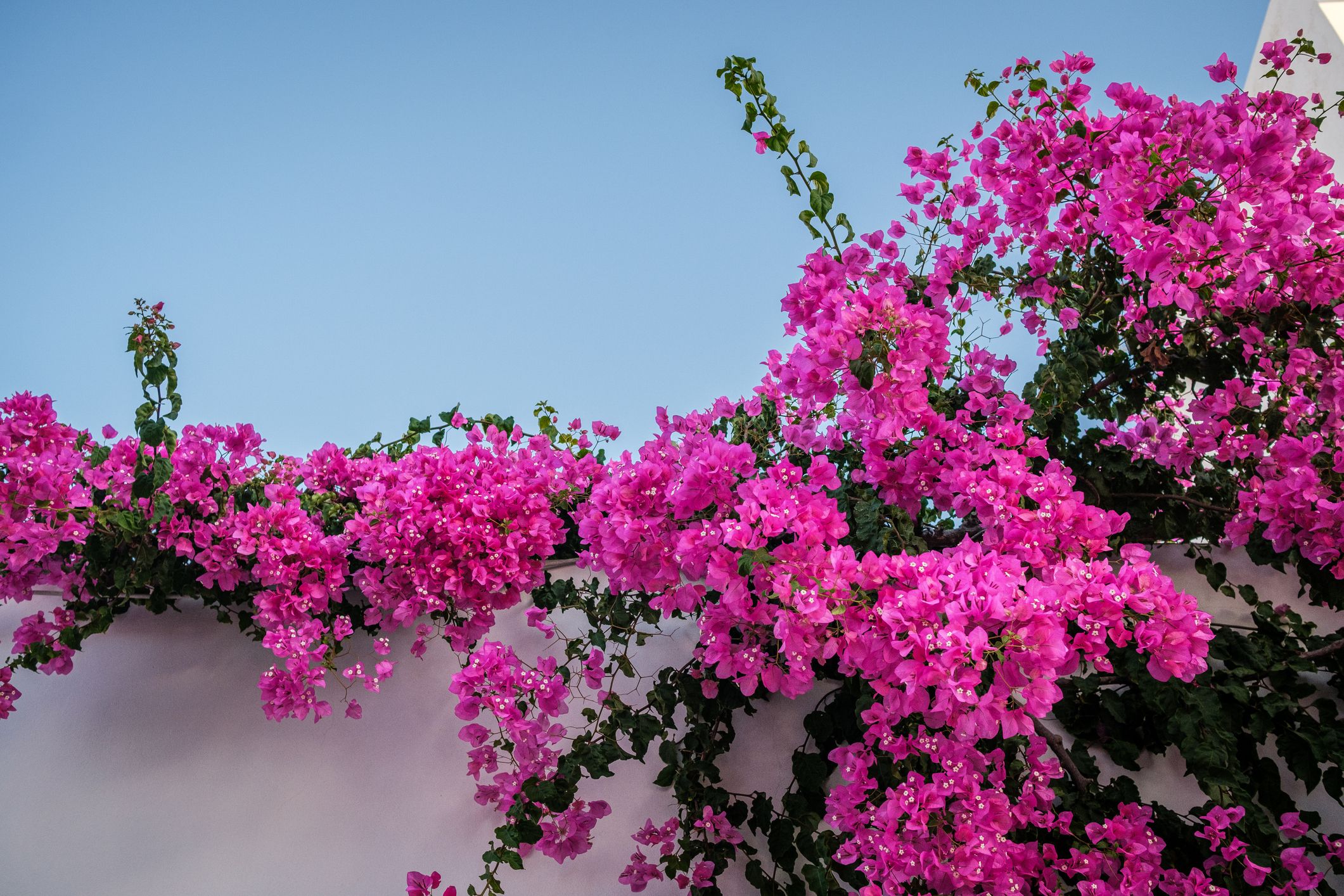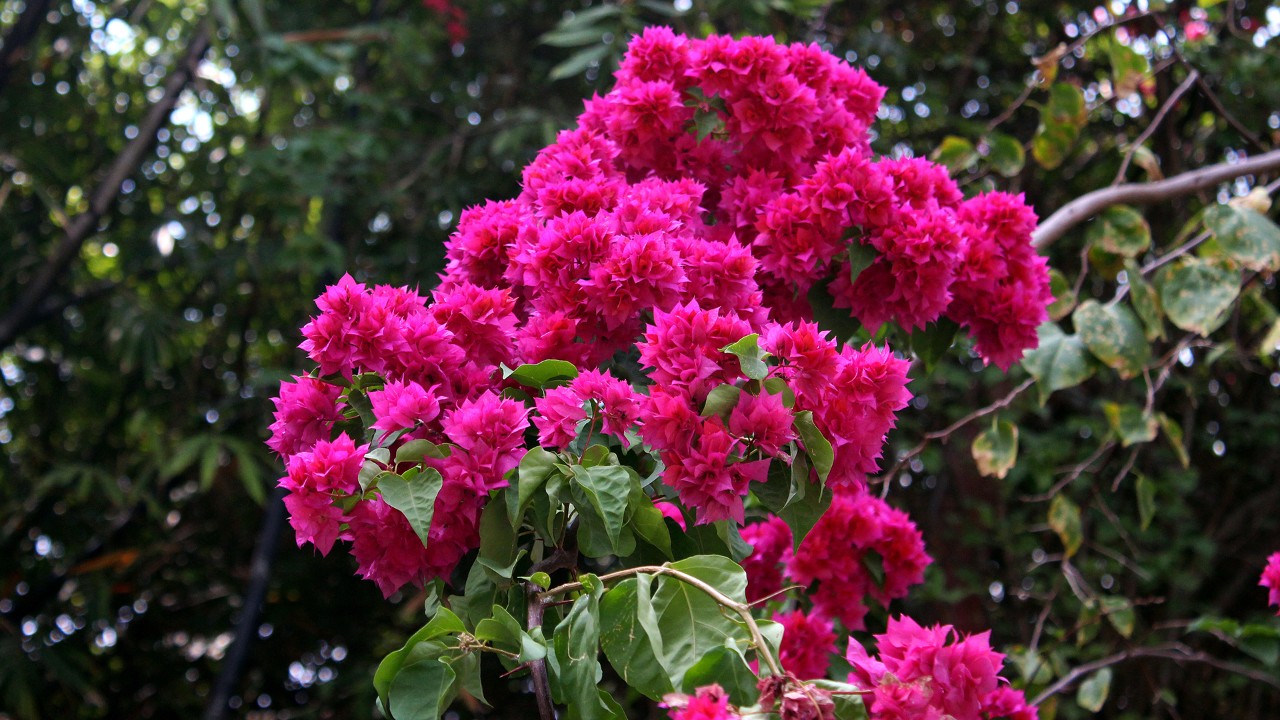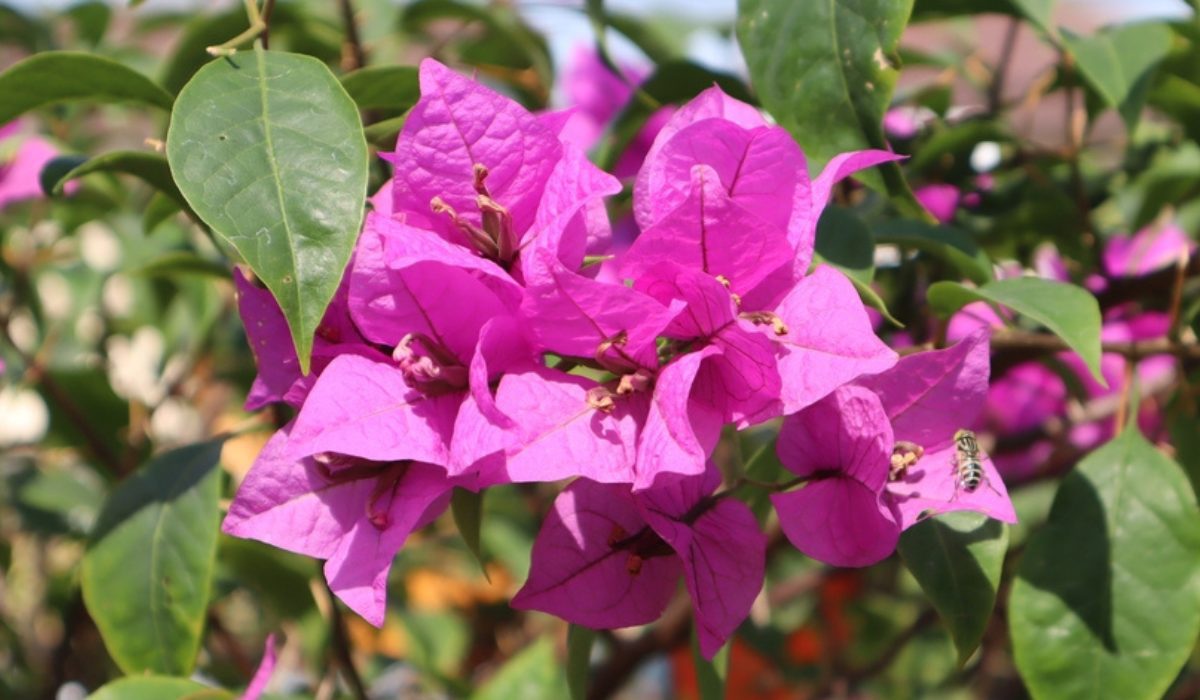
Barbara Karst Bougainvillea Care Guide
If you’re looking for an easy-care ornamental plant that catches everyone’s eye, bougainvillea is a fantastic choice. This tropical beauty is perfect for adding color to your garden or as a striking houseplant. It’s especially suited for hot climates and is known for its vibrant bracts, which come in shades of purple, pink, or red. Whether you’re in a tropical area or growing it indoors, bougainvillea is a low-maintenance plant that’s sure to make a statement.
Let’s dive into how to grow and care for your Barbara Karst bougainvillea, a popular variety known for its bold red bracts and year-round blooms.
What is Bougainvillea?

Bougainvillea isn’t exactly a flower—it’s a woody vine that produces long, pointed leaves, known as bracts, which are often mistaken for flowers. In the right climate, bougainvillea can grow up to 30 feet tall! It belongs to the Nyctaginaceae family and is a perennial, making it a great addition to gardens.
Although bougainvillea is often a climber, you can prune it to keep it bushy, which is perfect for growing in containers, hanging baskets, or as potted plants. The actual flowers are tiny, white, and tubular, surrounded by large, paper-like bracts. The bracts bloom in warmer months and can last for a long time, making it a gorgeous addition to any garden or space.
Bougainvillea Varieties

Bougainvillea comes in several varieties that bloom in different colors, and the Barbara Karst variety stands out with its vibrant red bracts that bloom all summer and fall. Here are a few other popular bougainvillea varieties:
- California Gold Bougainvillea: This variety has bright yellow bracts and can grow up to 30 feet tall.
- Sundown Orange Bougainvillea: Known for its unique orange blooms, this variety thrives in semi-shady areas and works well in containers.
- Spectabilis Bougainvillea: A resilient variety that grows up to 8 feet tall with thorny ornamental vines.
- Santa Rita Bougainvillea: Native to Central and South America, it grows up to 20 feet and is perfect for adding color to patios and decks.
- Jamaica White Bougainvillea: This variety features white, veined blooms and is a beautiful option for flower lovers.
Bougainvillea Growing Summary

| Growth Factor | Condition |
|---|---|
| Soil | Well-drained, moist soil |
| Water | Deep watering every 3-4 weeks |
| Sunlight | Full sun |
| Temperature | 60-70°F (15-21°C) |
| Fertilizer | Balanced fertilizer (8-8-8) |
| Propagation | Stem and leaf cuttings, grafting |
| USDA Zone | 9–11 |
How to Propagate Bougainvillea

Want to grow more bougainvilleas? Propagation is simple, and the best way is by stem cutting. You can take cuttings in late spring to mid-summer when growth is faster. Here’s how to do it:
- Choose a healthy vine: Use sanitized scissors or pruners to cut an 8-10 inch semi-ripe stem at a 45-degree angle.
- Prep the stem: Remove any flowers or leaves, leaving a few leaves at the top. This helps the plant focus on growing roots. If you’re ready to plant, dip the cutting into rooting hormone for better results.
- Store if not planting right away: Wrap the cutting in a damp paper towel and store it in a plastic bag in the fridge if you’re not planting it immediately.
- Prepare the soil: Use a mix of organic compost, perlite, and sand. Insert the stem into the soil, burying it about 2-3 inches deep.
- Water it well: Keep the soil moist and cover the cutting with plastic wrap to retain moisture.
- Rooting time: Place the container in a cool, shady spot. In 60-70 days, roots should start to form, and new growth will appear. Once your cutting has 8-10 leaves, you can transplant it into a larger pot.
How to Care for Bougainvillea

With just a few care tips, you’ll have a thriving bougainvillea that adds vibrant color to your space.
- Soil: Bougainvilleas prefer well-drained, loamy soil. Mix organic compost with perlite and sand for the best results. The soil should have a pH between 6 and 6.5.
- Watering: Bougainvilleas don’t need frequent watering—just 1/4 to 1/2 inch of water a week should be enough. Ensure the container has good drainage to avoid root rot.
- Fertilizing: Use a balanced fertilizer (such as 8-8-8) to support healthy growth. During the blooming season, you can apply liquid fertilizer every 7-10 days. Slow-release fertilizers or compost are also good options.
- Temperature: Bougainvilleas thrive in 60-70°F (15-21°C) temperatures. Protect them from frost by bringing potted plants indoors when temperatures drop below 50°F.
- Sunlight: Bougainvillea needs 6-8 hours of full sun daily to bloom. Indoor plants should be placed near windows with direct sunlight. If growing outdoors, make sure they get plenty of light to produce vibrant flowers.
Pruning Bougainvillea

Pruning is important to keep your bougainvillea in shape and encourage fresh blooms. Here’s how to prune it:
- Best time to prune: Late winter or early spring is the best time for pruning.
- Pinching: Pinch the tender ends of the stems to encourage denser growth and more vibrant flowers.
- Deadheading: Remove any dead or diseased stems to improve the plant’s overall health.
- Pruning tools: Use clean, sterilized pruning shears to prevent the spread of disease.
Common Problems with Bougainvillea

- Pests: Aphids, mildew, and caterpillars can attack bougainvillea, sapping the plant’s energy. Hosing off pests and using a homemade soap spray can help control them.
- Not Blooming: If your bougainvillea isn’t blooming, it might not be getting enough sunlight or could be receiving too much water or fertilizer. Reduce nitrogen-based fertilizers and ensure it’s getting the required full sunlight.
Bougainvillea on a Wall

Bougainvillea makes a fantastic climbing plant. Here’s how to grow it on a wall:
- Choose a sturdy wall: Bougainvillea needs support, so make sure your wall or trellis is sturdy enough.
- Planting: Once the plant is a few inches tall, gently guide it up the wall. Use soft ties to secure the vines to the structure.
- Pruning: Trim excess growth to keep the plant looking neat and tidy.
Final Thoughts
Whether you’re looking to add color to your garden or grow a bougainvillea indoors, it’s a rewarding and relatively low-maintenance plant. With the right care—plenty of sunlight, a little water, and the occasional pruning—you’ll enjoy beautiful, vibrant blooms year-round. Happy gardening!
FAQs for Growing and Caring for Bougainvillea
1. What are the ideal growing conditions for bougainvillea?
Bougainvillea thrives in full sunlight, needing at least 5-6 hours of direct sunlight each day to bloom beautifully. It prefers well-draining soil and warm temperatures (between 65°F and 95°F or 18°C to 35°C). Ensure the plant is not exposed to frost, as bougainvillea is sensitive to cold temperatures.
2. How often should I water bougainvillea?
Bougainvillea is drought-tolerant and does not require frequent watering. Water the plant thoroughly when the soil is dry to the touch, but avoid overwatering. It’s essential to let the soil dry out between waterings to prevent root rot. In the winter, you can water less frequently, as the plant’s growth slows down.
3. Can bougainvillea be grown indoors?
Yes, bougainvillea can be grown indoors as a houseplant, as long as it has access to bright, direct sunlight. A south-facing window is ideal. Be mindful of temperature fluctuations and drafts, as bougainvillea prefers warmth and may not thrive in cooler indoor conditions.
4. How do I prune bougainvillea to encourage blooms?
Pruning bougainvillea helps maintain its shape and encourages more vibrant blooms. Trim back any dead or damaged growth, and cut back the stems to a few inches above a leaf node to promote branching. Prune after the blooming cycle to ensure you don’t cut off flowers in bloom. Regularly trimming encourages healthy, compact growth.
5. How can I encourage bougainvillea to bloom more frequently?
Bougainvillea blooms best when slightly stressed. Ensure the plant is getting plenty of sunlight and water only when the soil is dry. Avoid over-fertilizing, as excessive nutrients can lead to more foliage and fewer flowers. A balanced fertilizer with low nitrogen can encourage better blooming. Deadheading (removing spent flowers) can also promote more blooms.
6. What type of soil is best for bougainvillea?
Bougainvillea prefers well-draining soil, such as a sandy or loamy mix. It thrives in slightly acidic to neutral soil with a pH level between 5.5 and 6.5. If growing in a container, make sure the pot has good drainage holes to prevent water from accumulating at the roots.
7. Does bougainvillea need a lot of fertilizing?
Bougainvillea doesn’t need a lot of fertilizer. In fact, over-fertilizing can lead to excessive foliage growth with fewer flowers. Feed the plant with a balanced, low-nitrogen fertilizer every 4-6 weeks during the growing season (spring to fall). In the winter months, you can reduce fertilizing as the plant is not actively growing.
8. How can I protect bougainvillea from pests?
Bougainvillea can attract pests like aphids, whiteflies, and spider mites. Keep an eye out for any signs of damage, such as distorted leaves or visible pests. Use insecticidal soap or neem oil to treat infestations, and regularly check the undersides of leaves for any pests hiding there.
9. Can bougainvillea be grown in a container?
Yes, bougainvillea can be grown in a container, which is ideal for controlling its growth and allowing it to thrive indoors. Ensure the pot is large enough to accommodate the roots and has adequate drainage. Regularly prune the plant to prevent it from becoming too large and unwieldy in a container.
10. Why are the leaves of my bougainvillea turning yellow?
Yellowing leaves on bougainvillea can be caused by several factors, including overwatering, nutrient deficiencies, or insufficient light. Make sure the plant is not sitting in soggy soil, and check if it’s receiving enough sunlight. A lack of nutrients, especially potassium and phosphorus, can also cause yellowing, so consider using a balanced fertilizer.
11. How do I prevent bougainvillea from becoming leggy?
Bougainvillea can become leggy if it’s not receiving enough sunlight or if it’s overwatered. To prevent this, make sure it gets plenty of direct sunlight. Regularly prune back any long, leggy stems, and avoid overwatering, as this can lead to weak, spindly growth.
12. Can I propagate bougainvillea?
Yes, bougainvillea can be propagated from cuttings. Take a cutting of healthy stems, and remove the leaves from the lower part of the cutting. Place the cutting in a pot with well-draining soil, and keep it in a warm, sunny spot. Mist the cutting occasionally to maintain humidity. After a few weeks, roots should begin to form, and the plant can be transplanted into a larger pot or garden.
Conclusion
Bougainvillea is a vibrant, low-maintenance plant that adds beauty and color to any space, whether indoors or outdoors. By providing it with the right amount of sunlight, water, and occasional pruning, you’ll enjoy beautiful blooms year-round. With just a little attention and care, bougainvillea will reward you with stunning flowers and be a delightful addition to your garden or home. Happy gardening!

